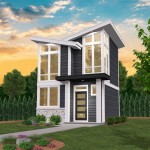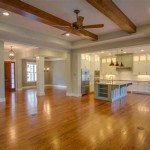House Plans with Bedrooms in the Basement
Incorporating bedrooms into basement areas offers homeowners a versatile solution for expanding living space. Whether accommodating a growing family, creating a private guest suite, or establishing a dedicated home office or entertainment zone, basement bedrooms provide valuable square footage. However, careful planning and adherence to building codes are essential to ensure safety, comfort, and functionality.
Egress and Safety Considerations
A primary concern when designing basement bedrooms is ensuring safe egress in case of emergencies. Building codes mandate specific requirements for egress windows, which must meet minimum size and opening dimensions to allow safe exit. These regulations vary by location, so consulting local building codes is paramount. Additionally, smoke detectors and interconnected fire alarms are essential safety features for all basement bedrooms.
Proper ventilation also contributes to a safe and healthy environment. Basements are prone to moisture buildup, which can lead to mold and mildew growth. Installing adequate ventilation systems, including exhaust fans and potentially a dehumidifier, helps mitigate these risks and maintains air quality.
Natural Light and Comfort
While basements may inherently have limited access to natural light, maximizing available light sources is crucial for creating comfortable and inviting bedrooms. Large egress windows not only serve as safety features but also provide natural light and ventilation. Consider incorporating window wells to further enhance light penetration. Strategically placed artificial lighting, including recessed lighting, wall sconces, and task lighting, can supplement natural light and create a welcoming atmosphere.
Maintaining a comfortable temperature in basement bedrooms often requires specific considerations. Basements tend to be cooler than upper levels, so adequate insulation is essential. Insulating exterior walls, basement ceilings, and even flooring can help regulate temperature and reduce energy costs. Adding a supplemental heating system dedicated to the basement may also be necessary to achieve optimal comfort.
Privacy and Functionality
Designing for privacy is important when incorporating basement bedrooms. Soundproofing measures, such as insulation within interior walls and flooring, can help minimize noise transfer between the basement and upper levels. Solid-core doors also contribute to sound dampening and privacy. Consider the layout and location of bedrooms within the basement to maximize privacy, particularly if multiple bedrooms are planned.
The overall functionality of basement bedrooms should be carefully considered during the design phase. Incorporate ample closet space and storage solutions to accommodate residents' needs. If space permits, consider adding a dedicated bathroom or ensuite to enhance convenience and privacy. Think about how the bedrooms will be used and design accordingly, whether for guests, family members, or other purposes.
Basement Ceiling Height
Ceiling height plays a crucial role in the comfort and usability of basement bedrooms. Building codes often stipulate minimum ceiling heights for habitable spaces, including bedrooms. Ensure the planned ceiling height meets these requirements. Low ceilings can make a space feel cramped and claustrophobic, so maximizing ceiling height whenever possible is desirable. Consider design elements that can create an illusion of height, such as light paint colors and vertical lines.
Moisture Control and Waterproofing
Basements are naturally susceptible to moisture infiltration from the surrounding soil. Implementing proper waterproofing measures is essential to prevent water damage and maintain a healthy living environment. This may involve exterior waterproofing, interior drainage systems, or a combination of both. Regularly inspecting and maintaining the waterproofing system is critical to its ongoing effectiveness.
Accessibility and Layout
Consider accessibility needs when designing basement bedrooms. If the home is intended for multigenerational living or individuals with mobility challenges, ensure the stairway leading to the basement is appropriately designed and safe. Consider wider doorways and hallways to accommodate wheelchairs or other mobility devices. Plan the layout of the basement to minimize obstacles and maximize maneuverability. Incorporate features like grab bars in bathrooms and adequate lighting throughout the space to enhance safety and accessibility.

House Plans Floor W In Law Suite And Basement Apartement

Cost Effective Craftsman House Plan On A Walkout Basement 25683ge Architectural Designs Plans

Small Cottage Plan With Walkout Basement Floor

Stylish And Smart 2 Story House Plans With Basements Houseplans Blog Com

Hugedomains Com Basement House Plans Floor Layout

Don Gardner Walkout Basement House Plans Blog Eplans Com

Walkout Basement House Plans To Maximize A Sloping Lot Houseplans Blog Com

Walkout Basement House Plans Farmhouse Hillside

House Plan 5 Bedrooms 3 Bathrooms 3912 V1 Drummond Plans

Walkout Basement House Plan For Sloping Lot








